Ahead of the Academy Awards, we’ve reviewed every short film in each category: Animation, Documentary, and Live Action.
Animation
The Boy, the Mole, the Fox and the Horse | UK | 35 minutes
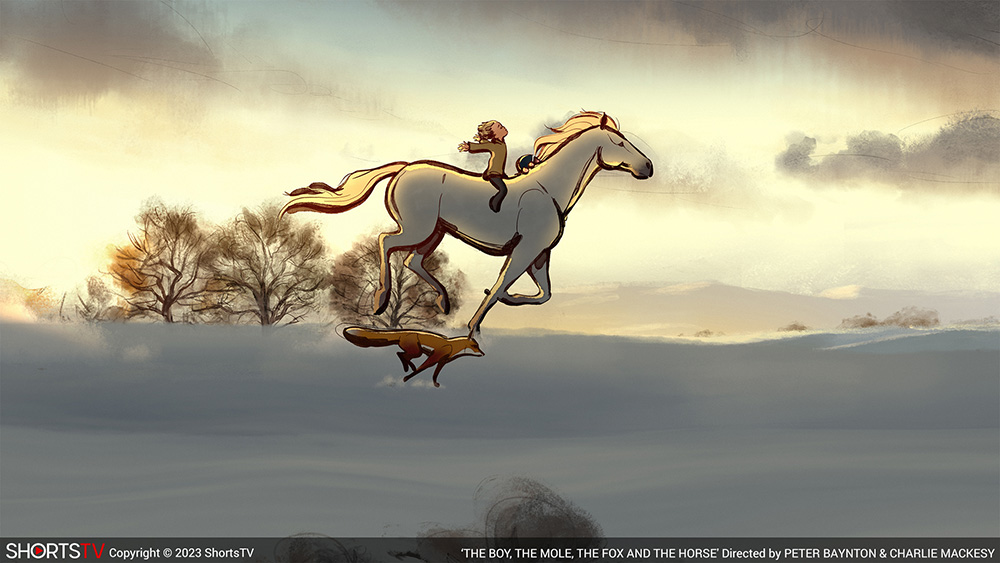
You can’t go wrong with a children’s story contending you are worthy of life just the way you are. It’s the sort of heavy subject matter that could very quickly move towards suicidal ideation, so you do have to applaud Charlie Mackesy (who co-adapts with Jon Croker and co-directs with Peter Baynton from his own illustrated book, also entitled The Boy, the Mole, the Fox and the Horse) for approaching from a place of compassion, empathy, and––most of all––youth. So when Boy (Jude Coward Nicoll) suddenly finds himself unable to control his tears after an error in judgment that leaves no one the worse for wear, all he needs is a gentle reminder from his new friends that crying is a strength rather than weakness. Those tears are necessary and meaningful. They should be felt, understood, accepted.
There are many such lessons within this dream-like adventure, from Fox (Idris Elba) admitting he’s quiet (mostly because he finds he has nothing of importance to say) to Horse (Gabriel Byrne) replying that honesty is never not important. Add Mole’s (Tom Hollander) penchant to always want cake, and Boy’s desire for home and this unlikely quartet, is able to speak from the heart with authentic emotion, humanity (animals or not), and a hopefulness towards an uncertain future. Predator or prey, every living creature seeks to survive––both physically and psychologically, through friendship and love (even if we may be embarrassed to say the latter word out-loud). One could even say Mackesy is answering the most important question of all with an audience not quite old enough to know to ask: what’s the meaning of life?
The film itself is slow-paced and deliberate in both movements and cadence (much like a Winnie the Pooh cartoon from my own childhood). And the animation style is wonderful: a watercolor-like aesthetic outlined by translucent ink in wide loops that become a static part of the characters rather than a constantly changing pen line from frame to frame. It mimics Mackesy’s original illustrations very well, filling in the whites with soft colors while never forgetting the starkness of the winter snow at their feet––each character can pop (Fox’s red) and/or become lost (Horse’s white in the trees) depending on whether the moment calls for danger or surprise. Soon, however, any such fear of the unknown will dissolve thanks to the patience to pause and listen. Only then will you discover your enemy is often just as scared as you.
B+
The Flying Sailor | Canada | 7 minutes
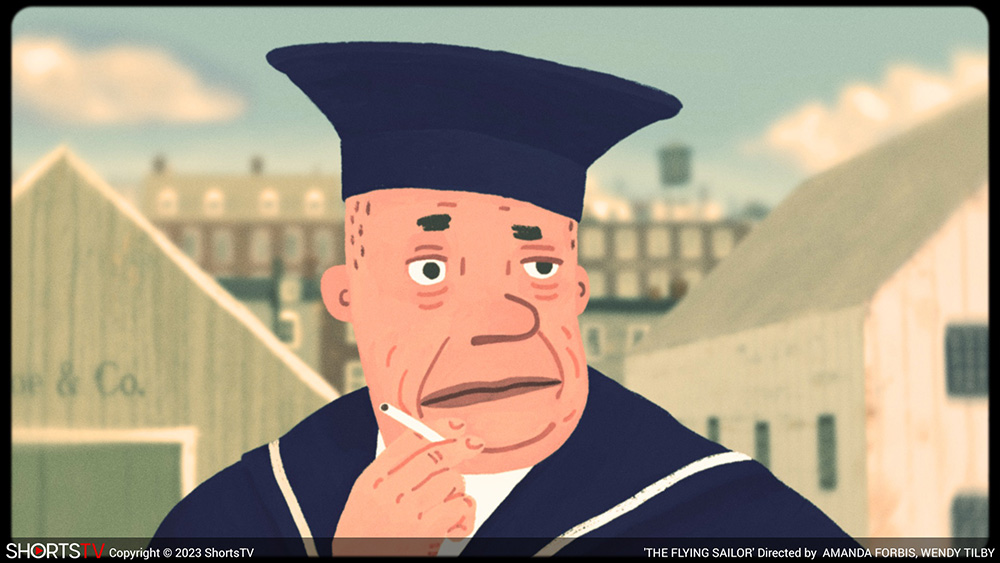
Amanda Forbis and Wendy Tilby aren’t kidding when they sneak a “True Story” label in the middle of an explosion that finds a sailor blown into the sky. There really was a man named Charles Mayers who found himself naked and unscathed two kilometers from the water where two boats (one of which carried TNT) crashed and ultimately created what’s known as the largest accidental explosion in history. Forbis and Tilby contemplate how that journey may have unfolded with an abstract, sensory-focused animated short entitled The Flying Sailor.
It’s a unique work composed of crudely drawn people against a 3D-rendered background with an impressive score (Luigi Allemano) and memorably kinetic detonation. We ultimately watch from the outside as the sailor loses his clothes to the chaos, his body spinning uncontrollably as it rises higher and higher before getting lost in the stars. We also witness his thoughts during the journey––those memories we’re told flash before our eyes of the good times in life that marked who we were when we were alive. And if we recall the joyful moments at death, we must conversely find ourselves reliving the bad at our return to life. Because the moment his trajectory flips, all those scenes from before gain the added context of failure that followed.
The whole is an experience more than anything else. We’re taken along for this ride through music and imagery, finding dramatic meaning in what proves a humorous anecdote (when removed from the destruction that occurred around this specific survivor). It’s broken eggs and punched faces, supernovas and black smoke. And in the end, it’s a matter of luck. Everything that goes up must come down. Some are able to walk away; others must, unfortunately, take their last gasp.
B-
Ice Merchants | Portugal, France | 14 minutes
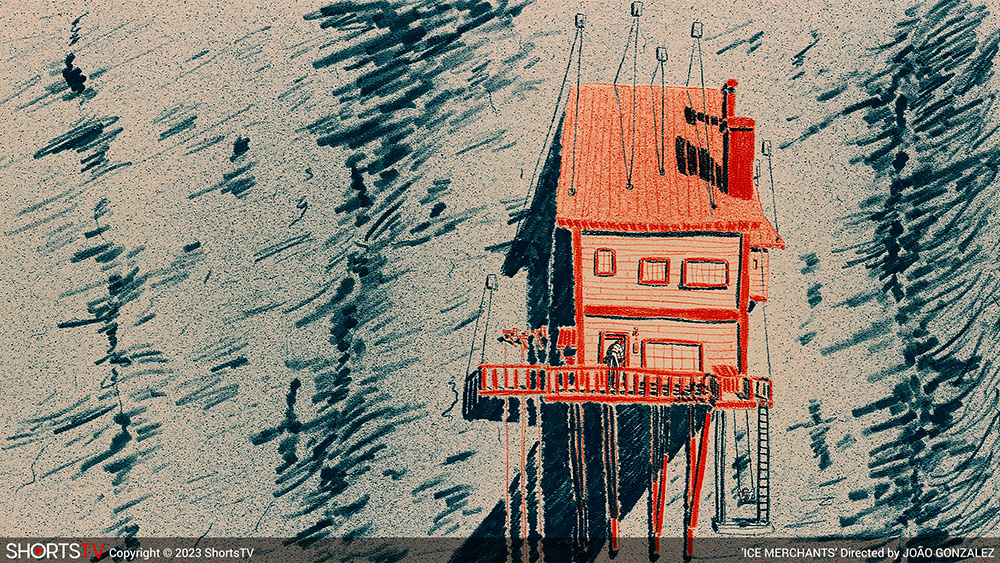
Watch out for vertigo thanks to João Gonzalez’s Ice Merchants beginning with a young boy swinging above a platform about five feet wide and 20,000 feet up, suspended off a mountainside. Relax those hands and risk missing your landing––only the tiniest margin for error protects him from flying into the open sky. Not that doing so would scare him. It’s what he and his father do each day as long as the thermometer reads subzero. They chip their ice block into cubes, secure the goods in a chest, and parachute down to the town below––the wind whipping the hats right off their heads. They sell the ice, buy new headwear, and take a makeshift elevator back home to start again.
It’s a fun setting and narrative device captured in heavy, coarse strokes of moving color. Father and son are elongated figures in red, the camera often rendering them flat as it comes in close to capture their movements like a pendulum. And alongside the comedic sense of repetition and familial camaraderie lies a sense of melancholic beauty. First it’s seen in those moments left lingering upon the hats as they converge in an embrace above the characters as they descend. Then it’s the way both cherish a yellow mug without an owner. A ghost of past love.
With the vertigo comes massive anxiety, too: Gonzalez ensures we know just how far up in the sky his characters are. The wind is always moving and the suspension rope securing their home to the rock is always creaking. The temperature initially goes down before slowly rising—the obvious consequence (no more ice) joining the less-obvious (a landslide) to risk everything in an instant. Panic turns to longing turns to concession. And the joke that they refuse to secure their hats pays off with a heartbreaking yet heartwarming resolution.
A-
My Year of Dicks | USA | 25 minutes

The title doesn’t lie. My Year of Dicks is exactly that: five chapters from 1991 wherein Pam (Brie Tilton) sought to lose her virginity. Five boys. Five penises. And the most uncomfortable conversation a teenager can ever have with a parent. From unrequited love to realities that will never touch the fantasy drawn up in her head, Pam tries to be what they want while also trying to get what she wants and all the while finds herself embroiled in embarrassing, sometimes problematic situations so hilariously obscene that they must be true. We can assume they are: Sara Gunnarsdóttir’s film was adapted by Pamela Ribon from her own memoir. Some material is too good to not bite the bullet and share with the world.
Because beyond the intrinsic humor that awkward sexual encounters supply, there’s also the adolescent act of pursuing sex while it hides as a culturally taboo subject the likes of which too many teens find themselves completely ignorant towards––a Puritanical traditionalism leads many adults to clam up and pretend the topic doesn’t exist. To normalize the romanticism, fetishizations, close-calls, consensual quid pro quos, and sense of hopeless frustration is to help shed light on what too many repress. And what better way is there to do that than with fanciful animation turning skater boys into vampires, mortified innocents into slime monsters, and an over-excited hand-holder into a kawaii character ripped straight from an anime episode?
The shifting aesthetics matching the subject matter is a major bonus alongside the evolving (or devolving) level of emotional investment in the mission on behalf of Pam when introducing each chapter with increasing irritation. And we shouldn’t discount Ribon’s story structure for following tropes with a self-awareness that allows them to unfold organically. Case in point: Pam’s BFF Sam (Jackson Kelly). No one who has ever watched a movie will be surprised to discover this platonic relationship has the potential for more, but rather than milk it for a last-second revelation, the film confronts it head-on halfway through for an authentic bit of friction. Because romance isn’t a storybook. Not with the jerks using you, the marks you use, or the safe bet. Thankfully, that inevitable rejection and pain only makes the real thing better.
B+
An Ostrich Told Me the World Is Fake and I Think I Believe It | Australia | 11 minutes
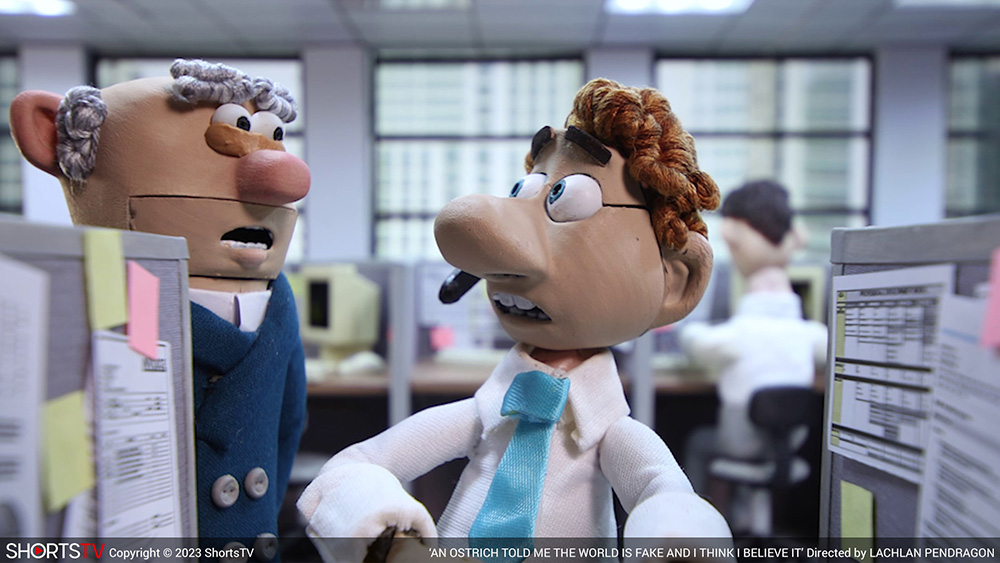
What would happen if a clay maquette saw through the artifice of its own claymation movie set existence? Writer-director Lachlan Pendragon looks to find out via his short An Ostrich Told Me the World Is Fake and I Think I Believe It and its unsuspecting lead Neil (Pendragon). The character sells toasters over the phone in an office cubicle and is no worse for wear beyond the fact that no one needs a toaster. Wherein he’d normally just go about the routine anyway (or would he if none of this is real?), however, he decides to leave his desk and converse with his co-workers––most of whom start losing faces and legs while the world outside turns green.
It’s an ingenious concept executed to perfection as the majority of the film is seen through a camera screen with the real-life animators’ arms rapidly moving behind it to mark each frame’s otherwise imperceptible shift. This viewpoint conjures allusions to The Truman Show until the titular ostrich appears to throw things straight into a place of dark surrealism à la Westworld instead. Because the only reason we’d be watching through a filter of our world’s creation would be to eventually bring Neil into it, right? Talk about a horror show of metal tools, plasticine copies, and giant hands threatening to wrap their fingers around him.
I don’t want to say too much; the narrative progression is finely tuned to deliver on both the comedic and horror aspects inherent to the endeavor of bridging two “universes” in the meta-sense of an animated figure come to life. Just know that nothing is random—not even the ostrich. It’s all a delightfully absurd play on craft that turns those awe-inspiring stop-motion process videos at the end of every Laika production into the film itself.
A
Documentary
Haulout | UK | 25 minutes
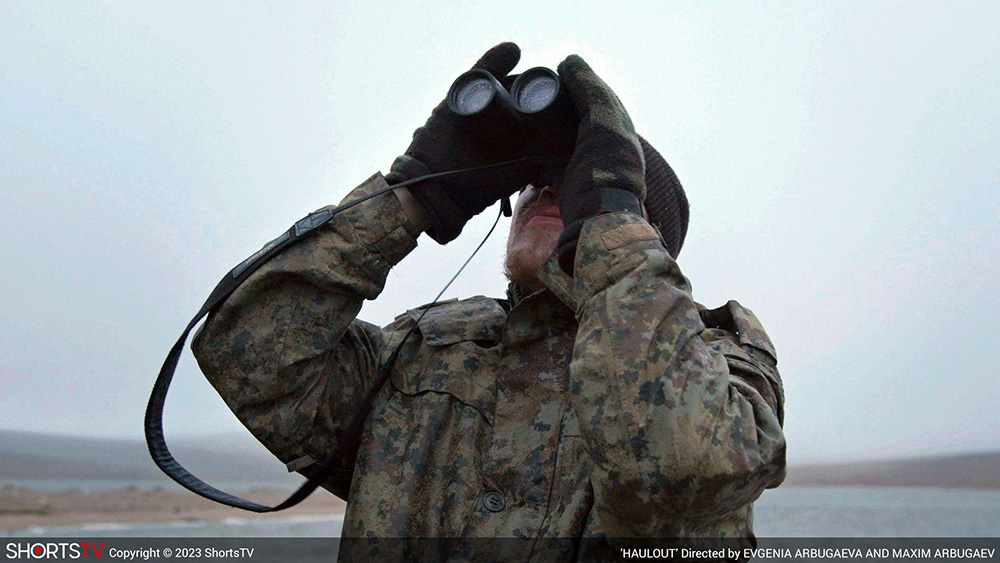
It’s September and marine biologist Maxim Chakilev is hiking in Arctic Siberia by his wooden beach shack, talking into a voice recorder that he isn’t able to “see any” yet. We don’t know what “it” is that he’s looking for nor why he’s here. Maxim Arbugaev and Evgenia Arbugaeva’s cameras merely capture him with an objective eye as he reacts and moves in faux-isolation. Only when October comes and he opens his door do we understand his research and the theme of climate change’s effect on wildlife. It’s a stunning reveal, expertly timed and set-up for maximum impact––you can’t expect what’s coming if you go in blind.
This is why Haulout doesn’t provide context until the very end. Whether it’s November or December when Chakilev finally leaves, snow is covering the ground as text appears to tell us both what we’ve already assumed and details of which we cannot imagine. Does the whole therefore feel like a trick? A little. The quiet before Chakilev opens that door and the chaos after become secondary to the shock and awe of the reveal itself. It’s still an important story to tell––with crucial evidence that cannot be refuted by climate deniers, since scientific fact exposes the cost of a walrus’s life without ice to rest upon.
The beautiful cinematography and fly-on-the-wall approach mimicking Chakilev’s own observational detachment render the whole a captivating watch: it forces us to really see what’s happening. There are no cutaways to talking head interviews or explanatory graphics. We are as uncertain and unprepared as the animals who find themselves piled atop each other to rest before going back into the water. Move an inch to the right and you risk the wrath of two tusks in your back––there’s literally nowhere to go. Thus it doesn’t take much to guess how it will all end. This quantity within this small of an area can only lead to unnecessary death. The fewer months of ice these walruses receive, the fewer their numbers can survive.
B
The Elephant Whisperers | India | 41 minutes
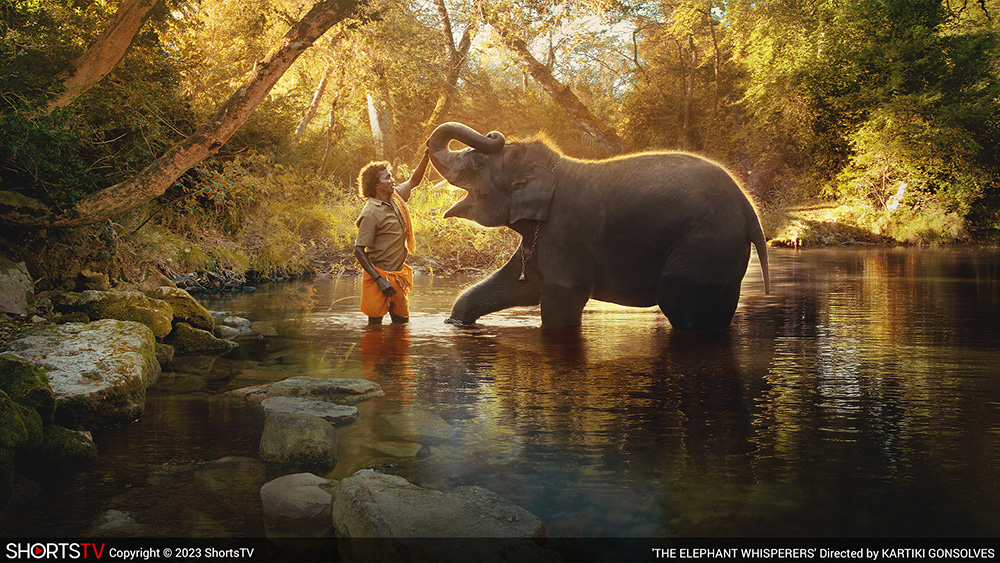
In a forested sanctuary in South India, Bomman and Bellie are tasked by the rangers to nurse back to health and raise young orphaned elephants who have lost their herds due to forced migration as a result of climate change. Bomman is a third-generation elephant protector teaching today’s youth to follow in his footsteps. Bellie is the only woman in the region doing this work; Raghu is her first assignment. And while the two will ultimately fall in love and get married, they pride themselves on being good parents from the beginning––treating Raghu like their own flesh and blood. A deep bond is formed, one marked by familiar human traits like jealousy, trust, and longing.
Kartiki Gonsalves’ The Elephant Whisperers follows their day-to-day dealings with Raghu and eventually Ammu. From feeding and bathing to playtime, Bomman and Bellie narrate their evolving lives and the impact these animals have upon them. It’s a heartwarming tale with its share of emotion and humor that succeeds at putting a face to the growing issue of wildlife conservation at a time of great change in nature. With a straightforward narrative thrust and endearingly personable lead characters (human and elephants alike) it’s easy to let the film take you on this brief journey of hope and inspiration. Because as long as people like Bomman and Bellie exist to help counteract the destruction wrought by an increasingly apathetic world, perhaps we can still come out the other side.
B
How Do You Measure a Year? | USA | 29 minutes
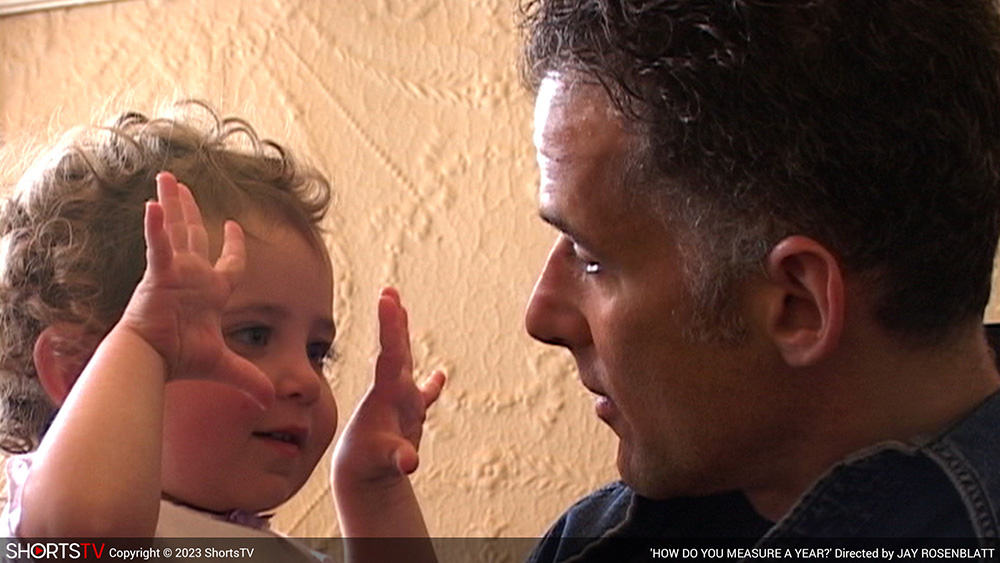
Personal time capsules are interesting in the sense that putting them out into the public sphere demands you be judged alongside the work itself. To watch How Do You Measure a Year? is thus as much about marking the passage of time physically and psychologically through its subject (Ella Rosenblatt) as it is the motives of its filmmaker (Jay Rosenblatt). Because while things surely began as an intimate document for familial purposes, it’s tough not to see its release to the world as a bit narcissistic––especially as one of the questions Jay asks his daughter every year on her birthday (the film’s conceit) is about their relationship. Where its depiction of troubled-yet-authentic love puts a warm smile on the faces of those who’ve experienced it, it screams “I’m a great Dad” to those who didn’t.
This isn’t intentional. It’s simply born from the reductive nature of hearing these two voices devoid of the other 364 days of each year. How much of her answers play to the camera? Play to his desires? Not only must you view it from this skewed, potentially biased POV in the moment, but the finished result was also put together by Rosenblatt in such a way that colors the objective with a blatantly subjective light. It’s thus an intriguing case where the real draw is in what can be read between the lines rather than what has been captured. We imagine what it was that Ella meant when she said she was afraid of him as a young girl and the “fights” she alludes to later. That mess is what captivates. Not the platitudes.
So are those platitudes enough? Are the allusions to human issues––one year delivers a laconic answer to one question before depression takes hold, despite never approaching that subject beyond the spark of our assumptions––enough to sustain the otherwise cute, surface-level lovefest of the rest? Sure. I enjoyed watching. I enjoyed the “ritual” of it all and can applaud the bond these two people share. It seems as though Jay did things right as a father and that Ella evolved to accept that whatever struggles they may have had were a product of love. Thus I think it works emotionally more than intellectually, but I can’t begrudge Oscar voters for choosing a fluffy human-interest piece when accounts of our worlds’ darkness are so prevalent otherwise.
C
The Martha Mitchell Effect | USA | 39 minutes

Anne Alvergue’s The Martha Mitchell Effect is a well-researched and -composed (from archival material) look into one of the key figures of the Watergate scandal. Known as an outspoken jester-of-sorts for her penchant to spout opinions to the media and members of Richard Nixon’s administration (in which her husband John served as Attorney General and campaign manager), Martha Mitchell was “allowed” to be herself so long as it either bolstered the GOP’s position or helped deflect attention from it. And I think the short does well to prove she would have been fine in that role––a “patriot” serving her husband and president as long as they kept her in the loop. We’ll never know, considering the sequence of events that unfolded, but her decision to attack seemed less about doing “right” than enacting revenge.
You could thus say that Martha epitomized the white woman conservative. She stood by her man and voted against her own autonomy––she was in a position to still benefit by proximity and compliance. As we discover onscreen, her reason to go on the offensive after Nixon and his staff sought to silence her and gaslight the American people into believing she was crazy stemmed from her desire to protect John from what she called a “frame job.” She felt Nixon not only turned on her, but that he was willing to let her husband take the fall for his actions. That, of course, wasn’t exactly the case. Soon she’d realize John was as involved in Watergate as he was in suppressing her ability to prove it. Martha was ostensibly waking up from a political indoctrination that existed deep within her bones.
Her story reveals the rampant misogyny in Washington, DC through the attitudes and reactions to her simply talking to the press while engaged with an administration that intentionally avoided them. And it goes even further to show just how easy it was for politicians to turn on their wives––they treated them as tools to help preserve their image rather than human beings to love as equal partners. It also exposes the complicity of the media merely by showing a slew of news clippings and TV reports wherein even those praising Martha used unflattering photos and puns to poke fun. They helped to defame her and then minimized her heroics to highlight the entertainment angle instead––ultimately parading her around to exploit the story much like her husband used to exploit her appeal.
B+
Stranger at the Gate | USA | 30 minutes
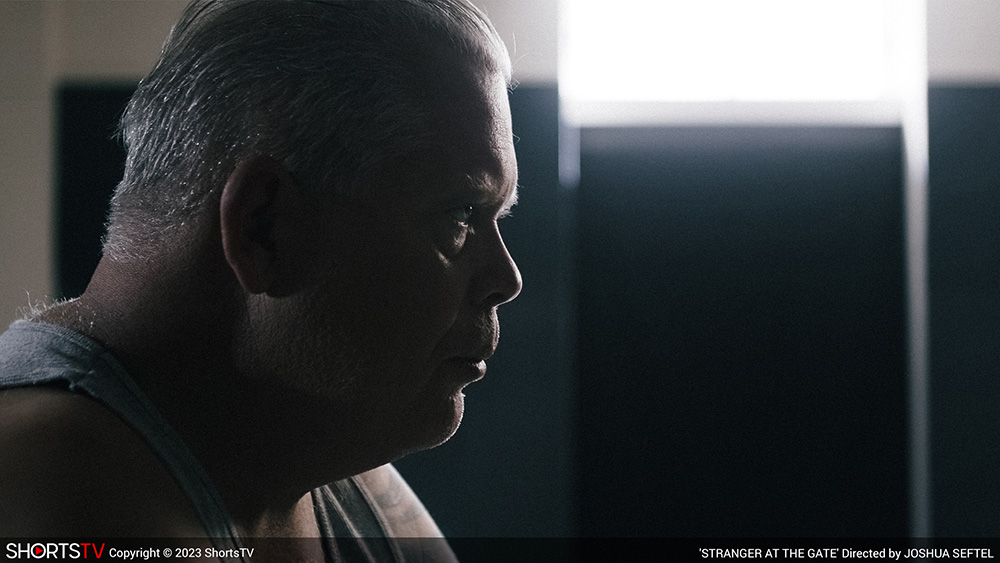
There’s a way to tell the story of a white former Marine so lost to the training that told him to kill Muslims in the Middle East that he wanted to kill the American Muslims in his neighborhood, and the path towards understanding that’s taken by way of those same people. And then there’s Joshua Seftel’s Stranger at the Gate: a despicable manipulation that intentionally plays with the audience’s expectations in such a way that going in blind can’t help but piss you off. Because it doesn’t introduce Richard McKinney as a reformed violent Muslim-hating jarhead. No. It introduces him through the filter of his ex-wife (Dana) and stepdaughter (Emily) giving solemn interviews about not knowing they were living with a monster.
Our first glimpse of “Mac”? A blurred visage that comes into focus as he sits down in the way incarcerated prisoners do when asked to tell their side of the story from jail. That’s when we start to learn about his indoctrination by the military and his gradual dehumanization of Muslims as being terrorists in their DNA. It’s when we learn he built an IED and planned to blow-up the local mosque in the hopes of murdering at least 200 members before proudly standing up in court to receive thanks for being a true patriot. And it’s when we’re told his scouting mission to find the best spot for the bomb ended with Dr. Bahrami kneeling at his feet and hugging him––an act of unprovoked compassion that opened Mac’s heart to reality.
Seftel feeds on our preconceptions by utilizing cinematic language associated with a certain type of documentary to give us the opposite. He doesn’t, however, acknowledge it. He doesn’t present the shift in focus as a “gotcha.” He just plays it all straight as though he wasn’t purposefully misleading us into believing we were about to see photos of dead bodies in the aftermath of an attack. That’s not a “twist.” It’s a betrayal and a major disservice to everyone involved––it trivializes an important example of the power of ignorance, the ability for even the most hardened racist to open his eyes if only he is willing to listen and learn from the source rather than the echo chamber of hate from where he came. A great subject is ruined by negligent, exploitative filmmaking.
D
Live-Action
An Irish Goodbye | Ireland | 23 minutes
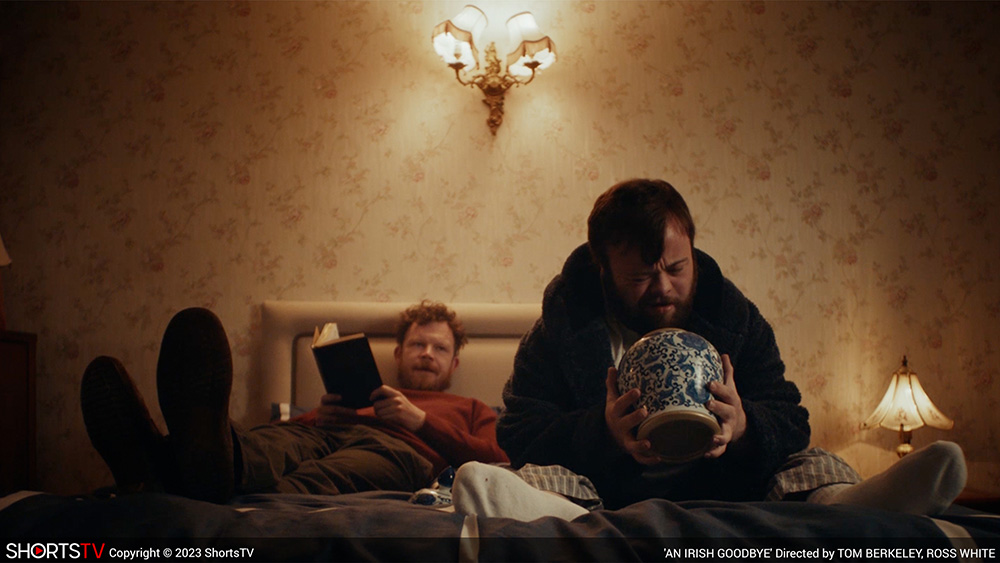
Back to attend his mother’s funeral in Ireland, Turlough (Seamus O’Hara) looks to get affairs in order before heading back to England. In his mind that means shipping his brother (James Martin’s Lorcan) with Down’s Syndrome off to an aunt and selling the family farm. Things aren’t that easy, however. Lorcan not only doesn’t want to go there, he doesn’t want to leave at all. So in the hopes of breaking through the unfeelingly pragmatic façade of his brother, he uses a list that Father O’Shea (Paddy Jenkins) has to prolong the inevitable. On it are 100 activities they presume the deceased wanted to accomplish before dying––a bucket list written upon receiving her fatal diagnosis. Turlough agrees to help Lorcan complete it (with Mom’s ashes in tow), no matter how absurd, as long as the latter agrees to leave once they’re done.
Tom Berkeley and Ross White’s An Irish Goodbye is funny and heartbreaking in equal measure as a result––the long-since-gone sense of camaraderie and laughter has returned to the property, only to inevitably disappear forever if nothing changes. The list montage is fantastic with wild DIY takes on “sit for a portrait” and “ride a hot air balloon” that leave Turlough with a smile that had been absent since the start. Lorcan won’t take no for an answer, even when things don’t go as planned. Many things don’t, too, thanks to him eavesdropping on Turlough’s phone call with a real-estate agent. Lorcan escalates the drama as time shortens, praying against all odds to remind his brother that they used to be best friends who’d never leave the other behind.
With memorable lead performances––even Jenkins, in a small role, steals scenes through an obvious boredom that takes his mind to inappropriate anecdotal places––beautiful cinematography, and a playful yet melancholic tone, it’s impossible not to get wrapped up in the emotions driving these brothers over the edge of conservative thinking. Because maybe they could make a go of it. Maybe they could run the farm themselves with Lorcan not proving the burden Turlough imagines. We don’t ever learn anything about the latter’s life in England; we can assume it’s nondescript and without anchor. Maybe an adventure like this is exactly what he needs to remember that he used to be happy even if he didn’t quite know it way back when. Lorcan believes as much and is willing to do everything in his power to see it through.
B
Ivalu | Denmark | 16 minutes
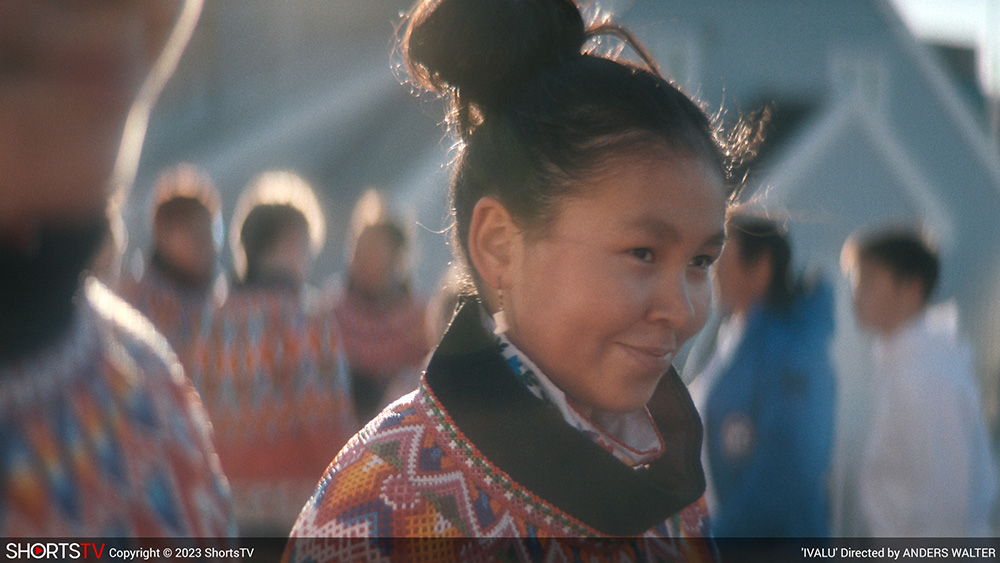
Based on the graphic novel by Morten Dürr, Anders Walter’s Ivalu tells the story of a young girl waking up to find her older sister gone. Pipaluk (Mila Heilmann Kreutzmann) is desperate to find out where she could be. Grandma doesn’t know. Dad (Angunnguaq Larsen) doesn’t care. So she travels the gorgeous Greenland scenery, visiting every place the two of them used to go while calling out her name. Maybe Ivalu (Nivi Larsen) is in the ice caves they used to hide in overnight. Maybe the water they used to fish by. Maybe even the abandoned military post they never went before––if the raven that seems to want Pipaluk to follow it is correct. And as every memory from those places rises to the surface, so too does the truth.
We know it from the beginning. At least we assume we do and hope we’re wrong. A quick glimpse within the girls’ pitch-black room as the door opens from the outside has a way of conjuring dark assumptions. To not know who was coming in before cutting to the morning to see who had left spells the worst. Suddenly talk about living with grandma adds context. So too does the general apathy of her absence. And when a tale of the “Mother of the Sea” arrives with a desire on Ivalu’s part to dive in and “comb her tangled hair” to save Pipaluk from a fate she can no longer bear, everything clicks into focus.
This is heavy subject matter told with a careful hand. Its realities are hidden by a poetic visual narrative constructed in the mind of a child who shouldn’t have to understand the abuse she’s obviously been witness towards. We are shown Pipaluk’s struggle to put the pieces together and recall that which exists in the fringes of her memories––that which she didn’t know meant everything to the horrors happening beneath this village’s noses. It’s an awakening that centers this unwitting witness rather than victim or perpetrator, letting her process the nightmare without forcing the audience to relive the violence. The anguish in the aftermath is enough to know what occurred. So too is the decision to label Ivalu’s actions as a sacrifice rather than an escape.
B
Le Pupille | Italy, USA | 37 minutes
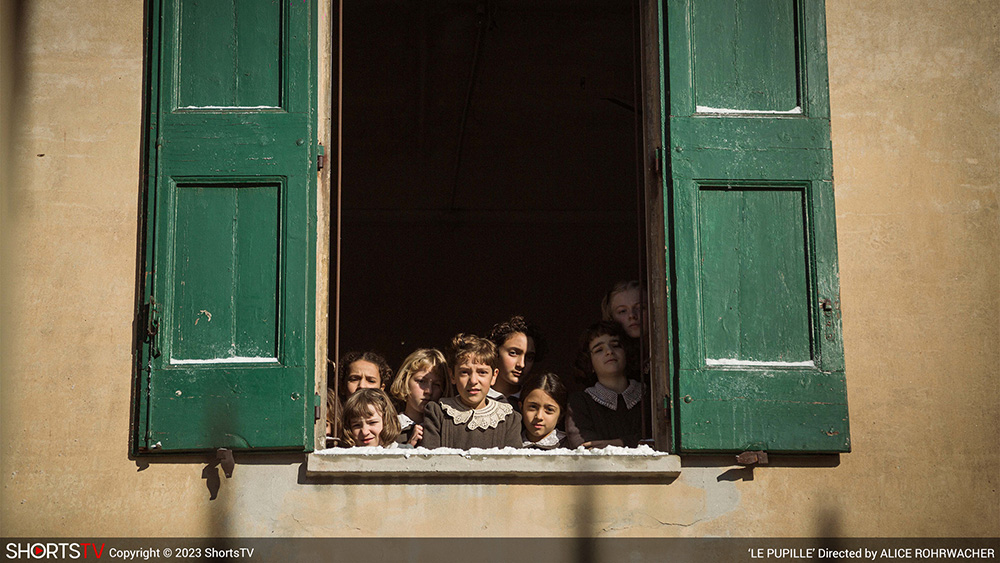
“Clumsily and freely” based upon a letter written a long time ago, Alice Rohrwacher delivers a cutely endearing Christmas short that takes place inside a church orphanage over the holiday. Populated by a bunch of young girls and their caretakers––led by Alba Rohrwacher’s Mother Superior––we are treated to the ironic lesson that being “bad” is often more enjoyable than being “good” thanks to Serafina (Melissa Falasconi), an angel-turned-bad-egg by way of a literal translation of a communal punishment. While she didn’t partake in the blasphemous singing and dancing that occurred during a radio break gone awry, she’s told by adults that she’s guilty by association. And if they speak the word of God, who is she to refute the charge?
It leads to a hilarious game of “chicken” that’s all the funnier because neither participant knows they’re playing. Will Mother Superior blink first? Or will it be the innocent Serafina, her goody-two-shoes soul marred by the lewd lyrics that will not leave her mind? Everything else that happens feeds into this confrontation, from the chimney sweeps cleaning the roof to the convent’s barren coffers to the cluelessly selfish woman (Valeria Bruni Tedeschi) who’s frantic about having the orphans say a prayer for her beloved––the reasons of which aren’t as pure as you may first assume.
Rohrwacher splices in little cut scenes of the girls singing a song about the original letter, each letting their personalities shine away from the scripted moments. These vignettes are where the whole shines most with mistakes and exasperation and boredom left intact to augment the otherwise slight nature of the main dramedy. And then there’s also the cake: a magnificent dish of English Pudding that would make anyone want to be bad. Moral schmoral.
B-
Night Ride | Norway | 15 minutes
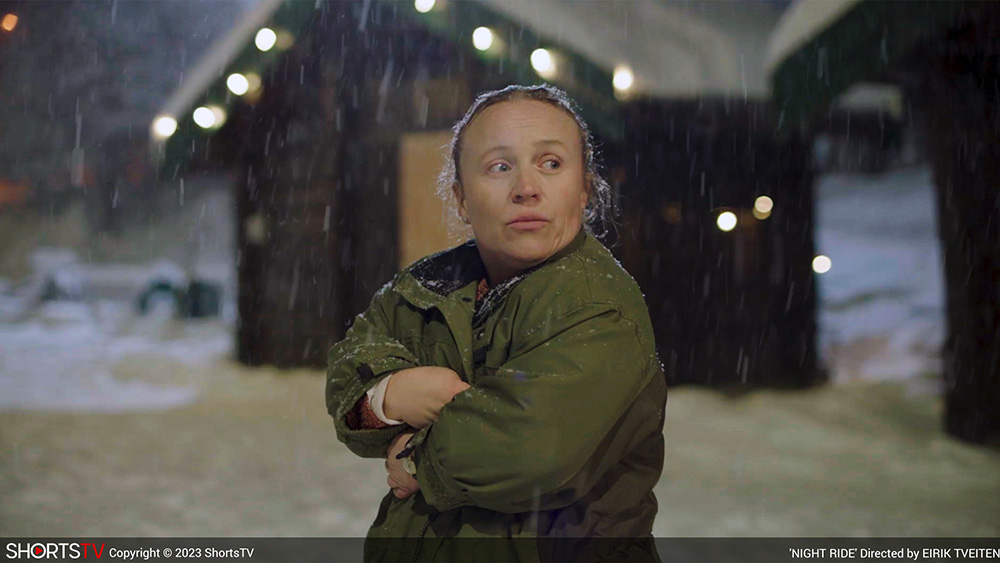
When the tram arrives only for its driver to get off and lock up, Ebba (Sigrid Kandal Husjord) can’t help prying open a door to try and stay warm. It’s one thing not to allow passengers on an unattended tram, but another to leave one solitary person standing in the freezing cold. The problem for Ebba, however, is that she won’t escape the cold unless she can close the door behind her. So she heads to the driver’s seat and starts pressing buttons only to accidentally put the tram in drive. What is, therefore, left to do? Allow the actual driver to call the cops and have her arrested? Or keep going and see what happens next?
Ebba chooses path number two so Eirik Tveiten’s Night Ride can commence. Cue the inevitable next stop with a bunch of people waiting to board and the fateful near-collision with a young trans woman (Ola Hoemsnes Sandum’s Ariel) to prevent her from simply running off. Rather than be a meet-cute romantic comedy, however, the film reveals the ugliness of humanity via Allan (Axel Barø Aasen) and Benjamin (Jon Vegard Hovdal) instead. First they both mock Ebba for being a little person. Then the former starts hitting on Ariel, inviting himself over to her place only to discover the reality of the situation with the lift of a wig.
Suddenly it’s also a glimpse at mankind’s penchant to turn the other way when someone is in need of help. Tensions escalate, Ariel pleads for assistance, and everyone––including Ebba––put their heads down. So our lead is faced with a second fork in the road: keep pretending nothing is happening and drive or stop the tram and confront the bullies. You can probably guess which she chooses (her presence as driver not being on the up-and-up playing a role) as well as the humorous result of that choice where it concerns this bunch of strangers getting their just desserts as far as finding themselves in a frightening situation of their own. It’s a breezy little adventure that perhaps breezes past the issues it’s highlighting, but also enjoyable enough to accept at face value anyway.
B-
The Red Suitcase | Luxembourg | 17 minutes
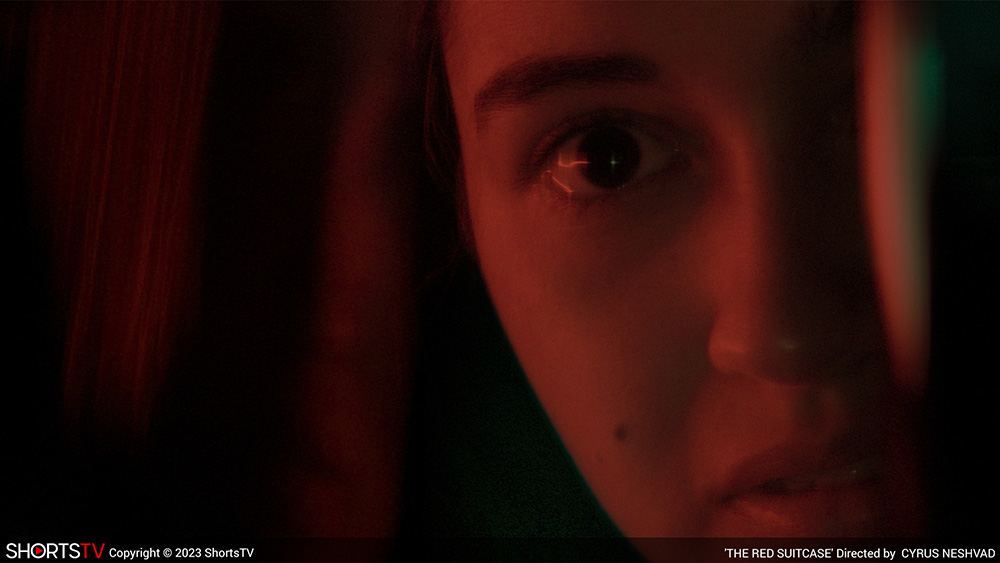
A lone suitcase goes around the airport turnstile until the entire conveyor belt stops. Only then do we see Ariane (Nawelle Ewad) standing and watching, no longer able to stall. She picks it up. As well as her phone. Her father is calling to ask where she is because she should have landed by now. With a sheepish lie about being delayed, she tells him she’s on her way. Yet upon approaching the automatic doors that let her out into the lobby, she runs and hides. The customs agents obviously wonder what’s going on with this Iranian girl clutching a bag, but she doesn’t understand French or English.
I can’t say I wasn’t worried about what might happen next. The Academy loves misery porn, so Cyrus Neshvad and co-writer Guillaume Levil making this scared Persian teen into a suicide bomber wasn’t a far-fetched assumption. The title is The Red Suitcase, after all. They know it too, prolonging the reveal only long enough to conjure preconceptions before discovering that Ariane isn’t the threat in this drama. She’s the victim. Because the reason she is so afraid to exit those doors is that the husband (Sarkaw Gorany) her father arranged to pick her up is waiting. What ensues is thus a tense cat-and-mouse chase that communicates far beyond language barriers to show just how much she’ll sacrifice to escape the patriarchal clutches of the men dictating her life.
It’s very effective in its machinations, whether via culture clash (exchanging toman for Euros doesn’t go quite as she thought) or the terror of being mere feet from her pursuer. She can’t even defend herself from him with anything but her silence and potential invisibility. He knows the language of those around them. He can motivate them to be on his side of a story she cannot refute. So while the whole is a bit reductive in a way that will get ignorant people screaming “Sharia law!” to push past the human element towards knee-jerk xenophobia against Muslims, the look in Ewad’s tearing eyes will prove it is really about autonomy and the sad truth: many only gain it after giving up everything else they have.
B+
Starting February 17, the 18th annual Oscar® Nominated Short Films releases, presented by ShortsTV, will debut in theaters only. To learn more about the participating theaters and how to purchase tickets, please visit www.shorts.tv/theoscarshorts.
